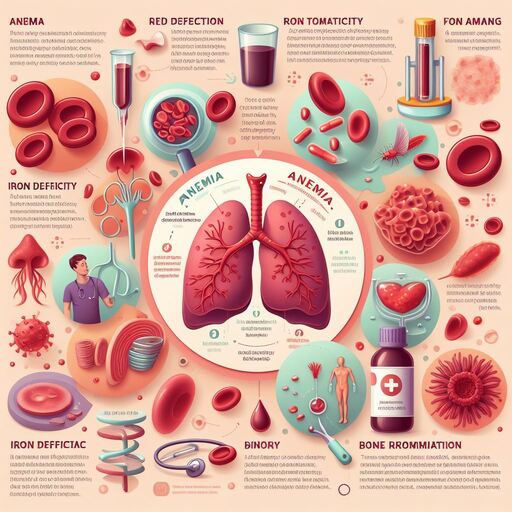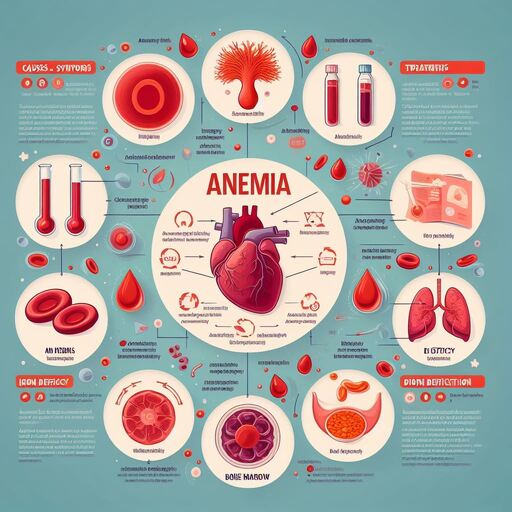The Silent Thief Understanding Anemias Grip on Health
The Silent Thief Understanding Anemias Grip on Health
Anemia, often referred to as “the silent thief,” is a common medical condition that affects millions of people worldwide, yet its impact on health can be underestimated. Characterized by a deficiency in red blood cells or hemoglobin, anemia can quietly rob individuals of vitality and well-being. In this article, we will explore the various aspects of anemia, from its causes and symptoms to its diagnosis and management, shedding light on this often overlooked health concern.
The Silent Thief Understanding Anemias Grip on Health
The Role of Red Blood Cells and Hemoglobin
To grasp the significance of anemia, it’s essential to understand the role of red blood cells (RBCs) and hemoglobin in the body. Red blood cells are responsible for transporting oxygen from the lungs to tissues throughout the body. Hemoglobin, a protein within RBCs, binds to oxygen molecules and facilitates their delivery to cells, enabling vital functions such as energy production.
When there’s a deficiency in either red blood cells or hemoglobin, oxygen transport becomes compromised. This deficiency can arise from various underlying factors, leading to the development of anemia.
Common Causes of Anemia
Anemia can stem from several causes, including:
- Iron Deficiency: The most prevalent cause of anemia worldwide, iron deficiency occurs when the body lacks sufficient iron to produce hemoglobin. This deficiency can result from inadequate dietary intake of iron, chronic blood loss (e.g., through menstruation or gastrointestinal bleeding), or poor iron absorption.
- Vitamin Deficiencies: Anemia can also be caused by deficiencies in other essential nutrients such as vitamin B12 or folate. These nutrients are crucial for red blood cell production, and their deficiency can lead to impaired RBC formation and subsequent anemia.
- Chronic Diseases: Certain chronic conditions like chronic kidney disease, inflammatory disorders (e.g., rheumatoid arthritis), or infections can disrupt the body’s ability to produce red blood cells, contributing to anemia.
- Genetic Disorders: Inherited disorders affecting hemoglobin structure or red blood cell production, such as sickle cell disease or thalassemia, can lead to chronic anemia.
Recognizing the Symptoms
Anemia can present with a range of symptoms, which may vary depending on its severity and underlying cause. Common signs of anemia include:
- Fatigue and Weakness: Decreased oxygen delivery to tissues can result in persistent fatigue, weakness, and a feeling of tiredness even after adequate rest.
- Pale Skin: Anemia can cause paleness or a washed-out appearance of the skin, particularly noticeable in the face, lips, and nail beds.
- Shortness of Breath: Individuals with anemia may experience difficulty breathing, especially during physical activity, due to reduced oxygen availability.
- Heart Palpitations: Anemia can lead to a rapid or irregular heartbeat as the heart tries to compensate for decreased oxygen levels.
- Dizziness and Fainting: Insufficient oxygen supply to the brain can cause dizziness, lightheadedness, or fainting spells.
- Cold Extremities: Poor circulation resulting from reduced red blood cells can make hands and feet feel cold to the touch.
Diagnosis and Management
The Silent Thief Understanding Anemias Grip on Health
If anemia is suspected based on symptoms or routine blood tests, further diagnostic evaluation is necessary to determine its type and underlying cause. Diagnostic tests may include a complete blood count (CBC), iron studies, vitamin B12 and folate levels, and additional specialized tests based on clinical findings.
Treatment of anemia focuses on addressing the underlying cause and may involve:
- Iron Supplementation: For iron-deficiency anemia, oral iron supplements are commonly prescribed to replenish iron stores and support red blood cell production.
- Vitamin Supplements: Anemia due to vitamin deficiencies (e.g., B12 or folate) may require supplementation to correct the deficiency and promote RBC formation.
- Management of Chronic Conditions: Treating underlying chronic diseases that contribute to anemia is crucial. This may involve medications, lifestyle modifications, or other interventions.
- Blood Transfusion: In severe cases of anemia, particularly when symptoms are acute or hemoglobin levels are critically low, a blood transfusion may be necessary to rapidly restore RBC levels and improve oxygen delivery.
Conclusion
Anemia is a significant health concern that can have far-reaching effects on overall well-being if left untreated. By understanding its causes, recognizing its symptoms, and seeking appropriate medical evaluation and management, individuals can effectively combat this “silent thief” and restore their health and vitality. If you suspect you may have anemia or experience symptoms suggestive of the condition, consult a healthcare professional for proper assessment and guidance. Together, we can raise awareness about anemia and empower individuals to take proactive steps toward better health.
The Silent Thief Understanding Anemias Grip on Health

